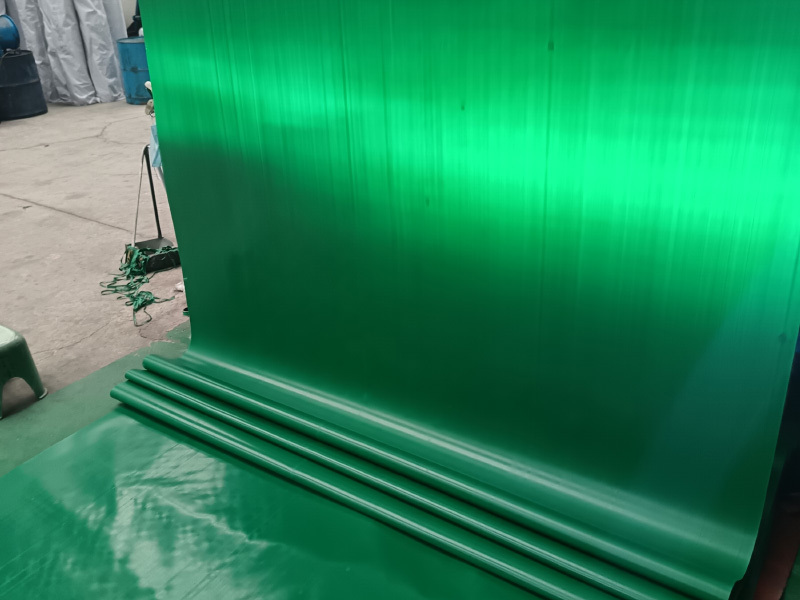Understanding the Manufacturing Process of Fire-Proof Glass Fabric: A Comprehensive Guide
Jun 01,2025
Understanding the Manufacturing Process of Fire-Proof Glass Fabric
Table of Contents
1. Introduction to Fire-Proof Glass Fabric
2. Importance of Fire-Proof Glass Fabric in Various Industries
3. Raw Materials Used in Fire-Proof Glass Fabric Manufacturing
3.1 Types of Glass Fibers
3.2 Coatings and Additives
4. The Manufacturing Process of Fire-Proof Glass Fabric
4.1 Step 1: Preparing Raw Materials
4

Understanding the Manufacturing Process of Fire-Proof Glass Fabric
Table of Contents
1. Introduction to Fire-Proof Glass Fabric
2. Importance of Fire-Proof Glass Fabric in Various Industries
3. Raw Materials Used in Fire-Proof Glass Fabric Manufacturing
3.1 Types of Glass Fibers
3.2 Coatings and Additives
4. The Manufacturing Process of Fire-Proof Glass Fabric
4.1 Step 1: Preparing Raw Materials
4.2 Step 2: Fiber Formation
4.3 Step 3: Weaving the Fabric
4.4 Step 4: Applying Fire-Resistant Coatings
4.5 Step 5: Quality Control and Testing
5. Applications of Fire-Proof Glass Fabric
6. Innovations and Advances in Fire-Proof Fabric Technology
7. Future Trends in Fire-Proof Glass Fabric Manufacturing
8. FAQs about Fire-Proof Glass Fabric
9. Conclusion
1. Introduction to Fire-Proof Glass Fabric
Fire-proof glass fabric has emerged as a critical component in enhancing safety across various applications. Its unique properties enable it to withstand high temperatures, making it ideal for use in environments where fire hazards are prevalent. Understanding the manufacturing process of this specialized fabric is essential for industry professionals and consumers alike.
2. Importance of Fire-Proof Glass Fabric in Various Industries
The demand for fire-proof glass fabric spans multiple sectors, including construction, automotive, aerospace, and energy. In construction, it is used for fire barriers and protective gear, ensuring the safety of both structures and occupants. In the automotive industry, it enhances vehicle safety features, while in aerospace, it protects critical components from heat damage. As industries prioritize safety, the significance of fire-proof glass fabric continues to grow.
3. Raw Materials Used in Fire-Proof Glass Fabric Manufacturing
The quality of fire-proof glass fabric is heavily influenced by the raw materials used in its production. Selecting the appropriate materials is vital for achieving the desired fire-resistant properties.
3.1 Types of Glass Fibers
The primary component of fire-proof glass fabric is glass fiber, which is known for its strength and thermal stability. There are several types of glass fibers utilized in manufacturing:
- **E-Glass**: Commonly used due to its excellent electrical insulation properties and good chemical resistance.
- **S-Glass**: Offers higher strength and thermal resistance, making it suitable for applications requiring enhanced fire protection.
- **C-Glass**: Known for its corrosion resistance, C-glass is often used in environments that face chemical exposure.
3.2 Coatings and Additives
To enhance the fire-resistant properties of glass fabric, various coatings and additives are employed. These may include:
- **Silicone Coatings**: Provide thermal stability and protect against degradation at high temperatures.
- **Intumescent Coatings**: Expand when exposed to heat, forming a protective char layer that insulates the underlying material from flames.
- **Fire Retardants**: Chemicals that inhibit the spread of fire and reduce smoke emissions.
4. The Manufacturing Process of Fire-Proof Glass Fabric
The manufacturing process of fire-proof glass fabric involves several meticulous steps, each contributing to the overall quality and performance of the final product.
4.1 Step 1: Preparing Raw Materials
The first step in manufacturing fire-proof glass fabric is preparing the raw materials. This involves sourcing high-quality glass fibers and any necessary coatings or additives. The materials are inspected for consistency and graded based on their properties.
4.2 Step 2: Fiber Formation
Once the raw materials are ready, the next step is fiber formation. This process typically involves melting glass at high temperatures and then drawing it into fine fibers. The created fibers are then cooled and collected for further processing.
4.3 Step 3: Weaving the Fabric
The glass fibers are woven into fabric using various techniques, including plain weave, satin weave, and twill weave. The choice of weaving method impacts the overall flexibility and tensile strength of the fabric. The woven fabric is then treated to enhance its fire-resistant properties.
4.4 Step 4: Applying Fire-Resistant Coatings
To ensure maximum fire protection, fire-resistant coatings are applied to the woven fabric. This step is critical, as the coatings provide an additional layer of protection against high temperatures and flames. The application can be done through dipping, spraying, or laminating.
4.5 Step 5: Quality Control and Testing
Before the fire-proof glass fabric is finalized, it undergoes rigorous quality control and testing. This includes assessing its fire resistance, tensile strength, and durability under various conditions. Testing ensures that the fabric meets industry standards and is safe for use in high-risk environments.
5. Applications of Fire-Proof Glass Fabric
Fire-proof glass fabric is used in a wide range of applications due to its exceptional properties. Some notable uses include:
- **Fire Protection Apparel**: Used in protective clothing for firefighters and industrial workers.
- **Insulation**: Serves as thermal insulation in buildings, vessels, and machinery.
- **Automotive Applications**: Incorporated into vehicle interiors and safety features.
- **Aerospace Components**: Protects sensitive equipment from heat and fire damage.
6. Innovations and Advances in Fire-Proof Fabric Technology
Recent advancements in technology have significantly improved the manufacturing processes and material properties of fire-proof glass fabric. Innovations such as nanotechnology and advanced weaving techniques have led to more effective fire-resistant fabrics that are lighter and more flexible without compromising on safety.
7. Future Trends in Fire-Proof Glass Fabric Manufacturing
As the demand for safety and fire protection continues to rise, the future of fire-proof glass fabric manufacturing looks promising. Trends include the development of sustainable materials, enhanced recycling processes, and the integration of smart technologies that can monitor temperature and fire hazards in real-time.
8. FAQs about Fire-Proof Glass Fabric
What is fire-proof glass fabric made of?
Fire-proof glass fabric is primarily made of glass fibers, which are known for their high strength and thermal stability, often combined with fire-resistant coatings and additives for enhanced performance.
How does fire-proof glass fabric work?
Fire-proof glass fabric works by resisting heat and flames, thanks to its unique material properties and protective coatings, which prevent the spread of fire and insulate underlying materials.
What industries use fire-proof glass fabric?
Fire-proof glass fabric is utilized across various industries, including construction, automotive, aerospace, and energy, primarily for its fire protection and insulation properties.
Can fire-proof glass fabric be recycled?
While recycling fire-proof glass fabric presents challenges, ongoing research aims to develop sustainable recycling processes that can reclaim materials for future use.
How do I choose the right fire-proof glass fabric for my needs?
Choosing the right fire-proof glass fabric involves considering factors such as the specific application, required fire resistance rating, and environmental conditions the fabric will be exposed to.
9. Conclusion
Fire-proof glass fabric plays a crucial role in enhancing safety across various industries. Understanding the manufacturing process, from raw material selection to final product testing, is vital for ensuring high-quality performance. As technology advances, the future of fire-proof glass fabric manufacturing promises even greater innovations, further solidifying its importance in safeguarding against fire hazards. With ongoing research into sustainable practices and advanced materials, fire-proof glass fabric will continue to evolve, meeting the ever-growing demands of a safety-conscious world.
Hot Tags:
Related Posts
Contact Us
E-mail:
WhatsApp:
Address:
500 meters west of the highway intersection in Xinxing Industrial Park, Yuanshi County, Hebei Province






